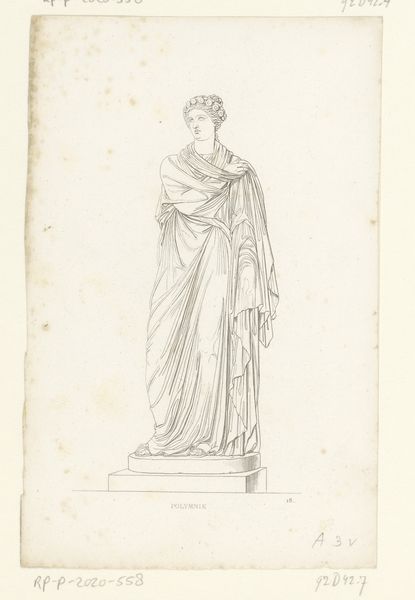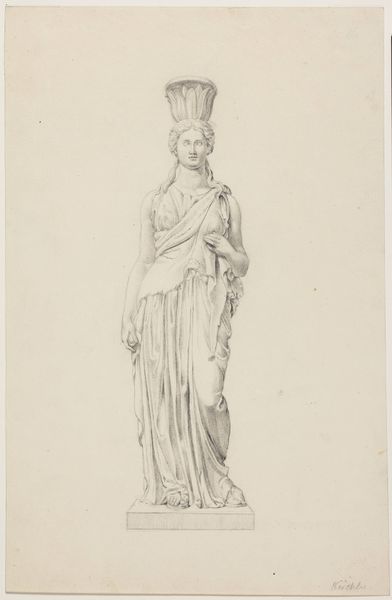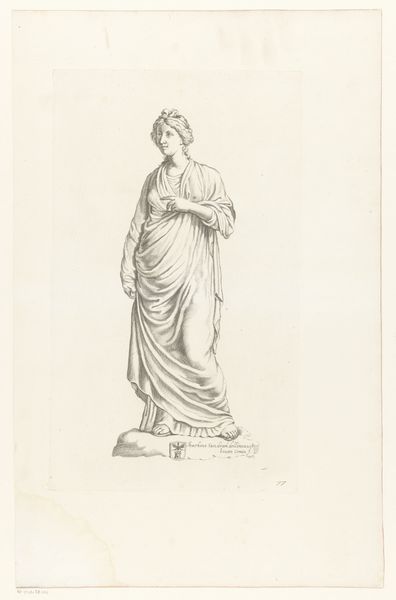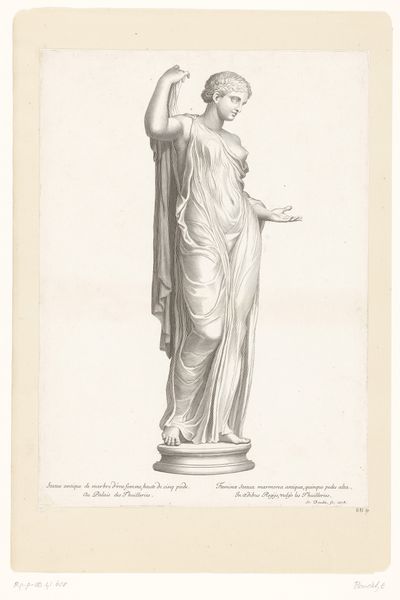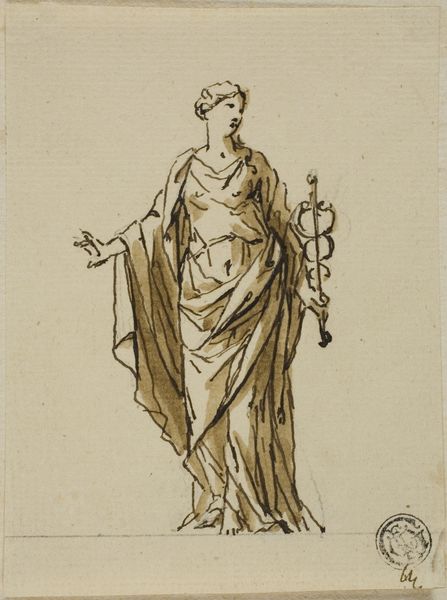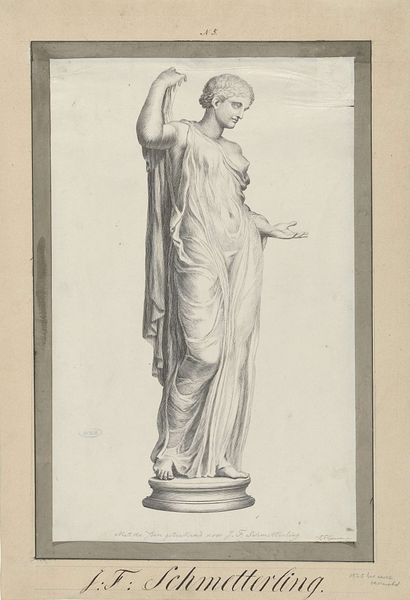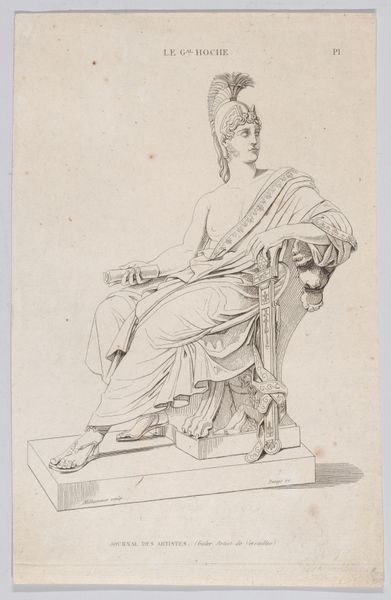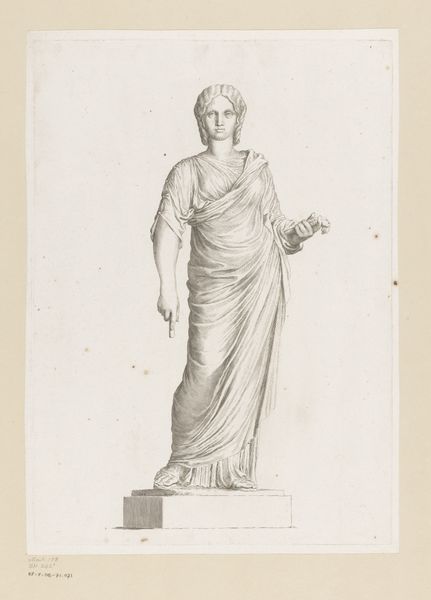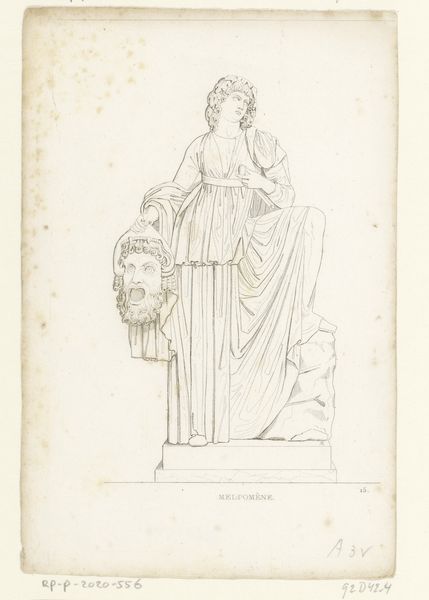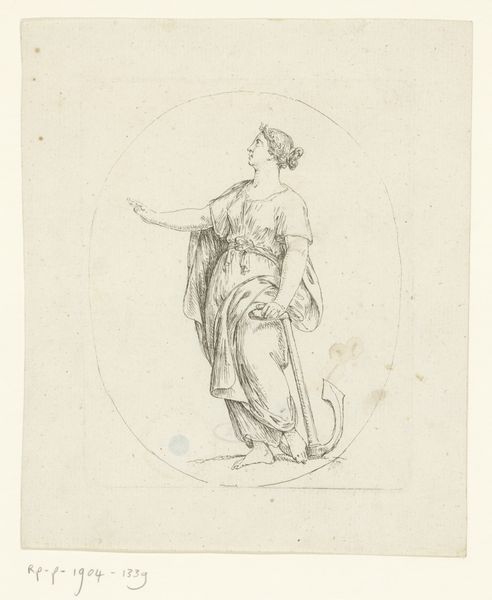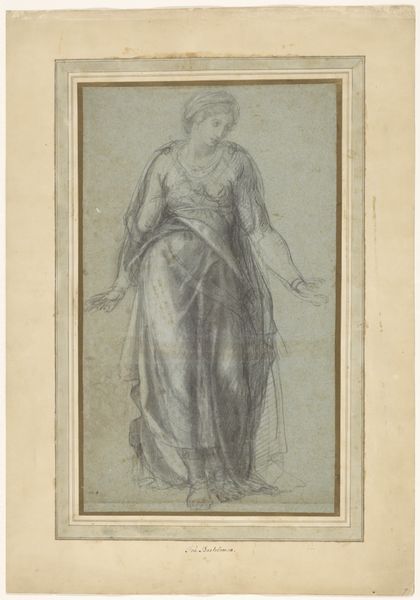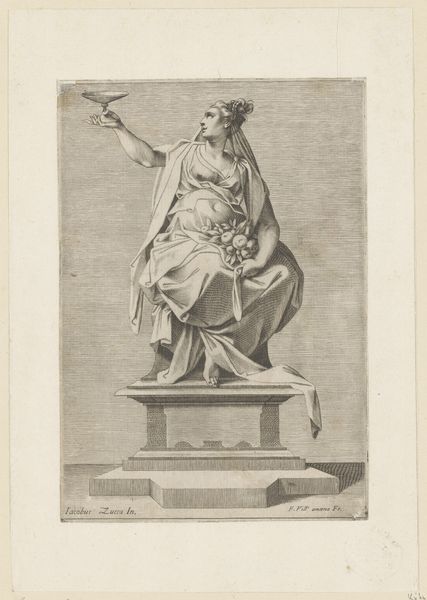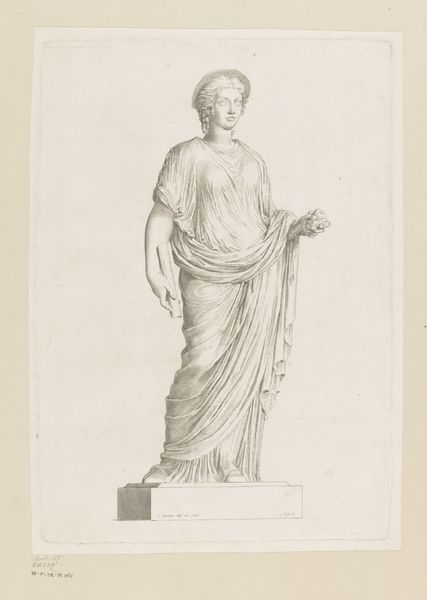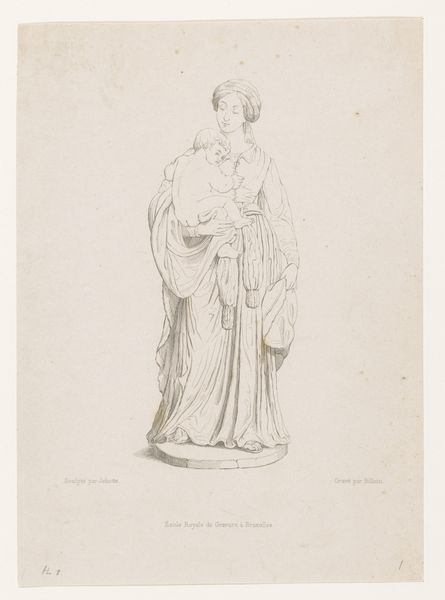
drawing, print, paper, ink, sculpture, graphite, pen
#
portrait
#
drawing
#
allegory
# print
#
classical-realism
#
paper
#
ink
#
classicism
#
sculpture
#
graphite
#
pen
#
history-painting
#
academic-art
Dimensions: 369 × 212 mm
Copyright: Public Domain
Curator: Editor: This is a drawing called "Statue of Pallas Athene" by Jan van Nost, the younger. I'm struck by the figure's calm but strong stance, especially considering it’s a classical figure rendered on paper. What connections do you see in this work? Curator: I see a fascinating intersection of power and representation. Athena, often appropriated as a symbol of wisdom and strategic warfare, has been historically deployed to legitimize patriarchal structures. This drawing, through its classicizing style, participates in a long history of idealizing and enshrining particular versions of femininity and authority. Consider the period this artist was active. How might gender and social roles have informed the creation and reception of this image? Editor: So, beyond just being a nice drawing of a statue, you're suggesting that it is actually reinforcing certain power dynamics? It’s interesting because at first glance, it seems purely academic, a study of form. Curator: Exactly. Think about whose perspectives are centered when we reproduce these images, both then and now. Is it really neutral? The statue stands on a pedestal. Does that pedestal become a symbolic reminder of who gets lifted up, and who does the lifting? Whose histories are being celebrated and whose are being marginalized by such depictions? Editor: That’s a great point about the pedestal and perspective. I guess I had just accepted her presence, without questioning its implications. Curator: Precisely. Now, consider how we can use this awareness to challenge these traditional narratives. What new meanings might we uncover by viewing her through a feminist lens or a post-colonial critique? Editor: It completely changes my understanding of the image. It is more than just the subject that matters; it’s about critically examining what the drawing might say about social issues. Thanks! Curator: Absolutely, and remember, our interpretation can be a tool for empowerment. Let's continue to question the art we see.
Comments
No comments
Be the first to comment and join the conversation on the ultimate creative platform.
